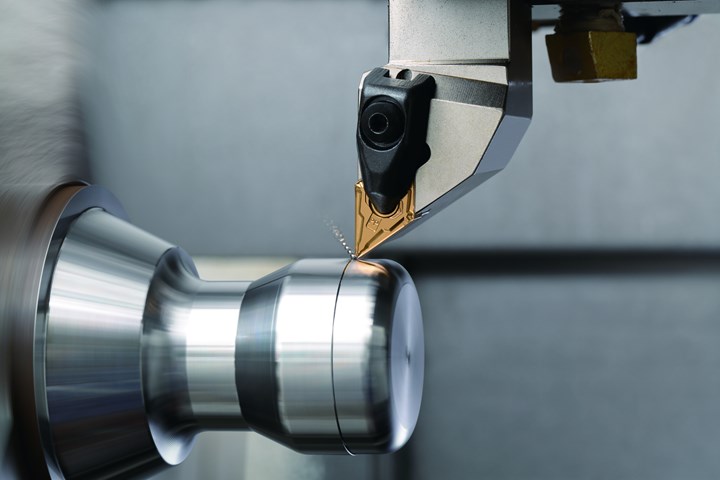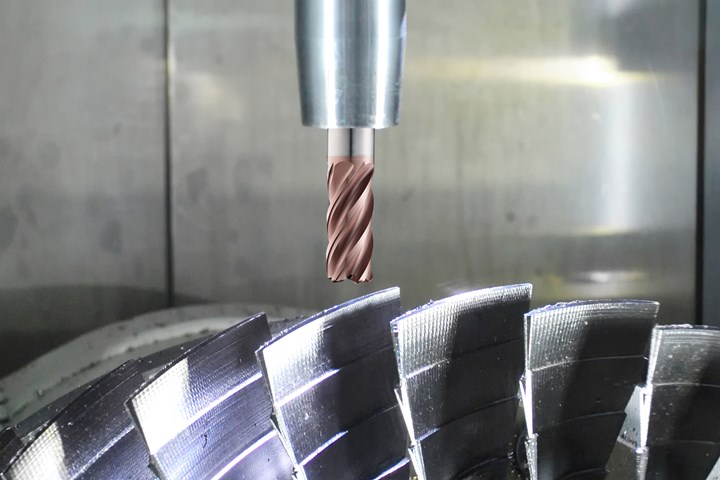Solid Tool or Indexable Inserts? Why Not Both!
Kyocera SGS Precision Tools’ mill-turn demonstrations highlight varied tool choices and varied application knowledge.
Share





When does an application call for an indexable-insert cutting tool rather than solid carbide? With both tooling types on display in a shared space – an IMTS first for the jointly branded company – Kyocera SGS Precision Tools is likely to have the answer. In addition to standard milling and turning offerings, SGS’s solid line includes sweeping-geometry, circle-segment “barrel cutters” and coolant-through drills, while highlights of Kyocera’s indexables range from end and face mills to grooving, turning and drilling tools.
With application knowledge as broad as the jointly branded product offering, booth representatives also stand ready to show rather than tell. Live cutting demonstrations of both cutting tool types highlight where and why each stands out, while also showcasing the inherent flexibility of a mill-turn machine capable of milling and turning with both indexable or solid carbide tools.

Solid tools like the one cutting the blisk are the province of SGS, while indexable offerings like the turning tool are Kyocera’s specialty. Photo Credit: Kyocera SGS Precision Tools

Related Content
-
Custom Workholding Principles to Live By
Workholding solutions can take on infinite forms and all would be correct to some degree. Follow these tips to help optimize custom workholding solutions.
-
How to Troubleshoot Issues With Tool Life
Diagnosing when a tool is failing is important because it sets an expectation and a benchmark for improvements. Finding out why gives us a clue for how to fix it.
-
Toolpath Improves Chip Management for Swiss-Type Lathes
This simple change to a Swiss-type turning machine’s toolpath can dramatically improve its ability to manage chips.













